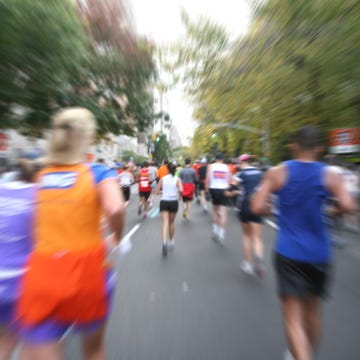Q I started running two years ago and have increased my half-marathon pace from 9:30 miling to 7:30 miling. I have noticed recently that I’m using a longer, slower stride for both speedwork and general training, and my times have remained the same. Is this progress or a form of laziness?
A With training, most runners tend to increase their stride length and reduce their stride frequency. So it is progress, and it’s probably because you are unconsciously optimising your running economy. The importance of running economy is that at any running speed the efficient runner will use less fuel, which in turn means their working muscles will require less oxygen, and their heart will not need to work as hard. Or if they use the same amount of oxygen as before, and their heart works just as hard, then they will go faster using the same effort. So perhaps you should try going faster.Having said that, long-distance and ultradistance runners often favour a running gait which utilises a short stride. They appear to evolve into this in order to minimise the wasteful up-and-down component of each stride. It may be, then, that as novice runners gradually turn into club runners, their stride lengthens as they become fitter – as has happened to you. But if they radically move up in distance, their best ‘distance stride’ might gradually become a bit shorter.
What everyone's reading
Finally, it may be that you have simply bought new running shoes, of a different make and type than before. This, too, can affect your running stride.
—Craig Sharp, Professor of Sports Science at Brunel University College












